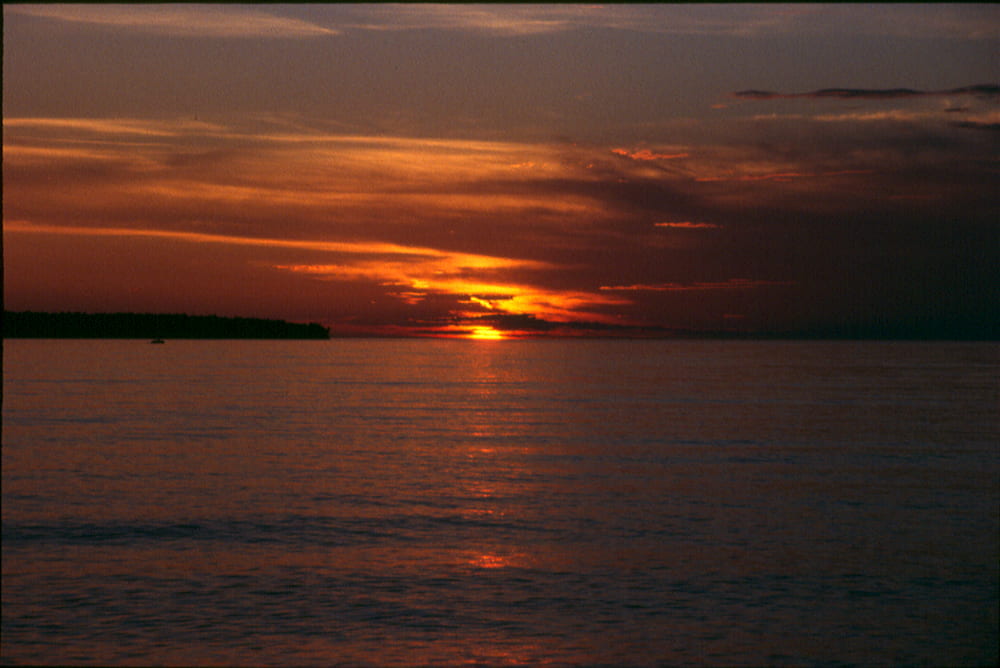
Grand Island, Michigan
The Grand Island Archaeological Research Project, initiated in 2001, is a cooperative between Illinois State University and the Hiawatha National Forest. The Grand Island Archaeological Project has several objectives. First, the Illinois State University and Forest Service archaeologists are involved in Phase III, or interpretive level, investigation of sites that cover the entire human history of Grand Island. Our goal is to understand the specific activities of the people who lived and used the resources of the island. We do this by opening up larger blocks of various sites to expose surfaces of interest that lets us interpret activities at the site. We excavate slowly and all recovered artifacts are piece-plotted and these locational data are entered into a Geographical Information System (GIS). The GIS data create detailed maps of artifact distributions for reconstructing the activities at the site. Our excavation strategy also permits us to recover tools in context, undercover features (hearths, pits, and living surfaces) and collect botanical and faunal data that are used both to date the site and provide evidence of the resources that were being exploited (Skibo et al. 2004, 2007).
The second objective of the Grand Island Archaeological Project is to provide advanced training in the field techniques of archaeology. Students learn these techniques through the excavation of Archaic through historic period sites depending on the focus of our season’s research. Thus far, the Grand Island Research Program has investigated Late Archaic, Woodland, historic Native American, Willams and Mather era sites. Students also learn the basics of pedestrian survey and shovel testing, map reading, and the recording of archaeological sites.
Our third objective is to promote understanding of the island’s unique history to visitors to the island. Several tours of our excavation are given each day and bikers and hikers are encouraged to stop by and learn more about our work. In addition, we have participated in a Youth Archaeology Workshop each year, which gives a small number of local youth a chance to participate in our project. They work side-by-side with the college student excavators and get a first-hand look at real archeology.
History and Location

Grand Island, roughly eight miles long and three miles wide, is the largest island on the south shore of Lake Superior. Located just off shore from the small community of Munising, Michigan, the island has been continuously occupied from 2,000 B.C. to the present and has played a key role in both the prehistory and history of the region. The first evidence for occupation of Grand Island was by the Anishnabeg (Ojibwe) or related people who occupied the island seasonally taking advantage of its protective harbor and productive fishing grounds. There is also evidence that the Native peoples exploited other resources as well including deer, beaver, moose, and a variety of local plants.
Contact between the small Native American group who lived on the island and Euro-Americans began in the 18th century with sporadic visits from trappers and missionaries. A French trader’s cabin that dates to roughly 1820 (Franzen 2004) is an indication of how the local Native People became involved in the trade of furs to supply the European market. It was not, however, until 1841 and the arrival of Abraham Williams that Grand Island, and the entire Lake Superior, saw its first permanent Euro-American settler. After an invitation from the local chief of the Grand Island Band of Anishnabeg, Williams opened a trading post on the south end of the island, where he lived with his family until his death in 1871.

Soon thereafter, William Mather, President of the Cleveland Cliffs Iron Company, purchased the island as a natural reserve. There are a few private cabins that remain on the island, and most of these were constructed by Mather and some of his company executives. Mather also rented out many of the cottages and built a small hotel that catered to tourism in the still relatively untamed northern Great Lakes.
The Department of Agriculture and the Forest Service purchased Grand Island in the early 1990s and they have converted it into a National Recreation Area. Besides developing the island for hikers, bikers, and campers, the Forest Service has been committed to understanding the complete history of the island from 2,000 B.C. through the Mather era. Thus far, over 200 prehistoric and historic sites have been discovered on Grand Island.